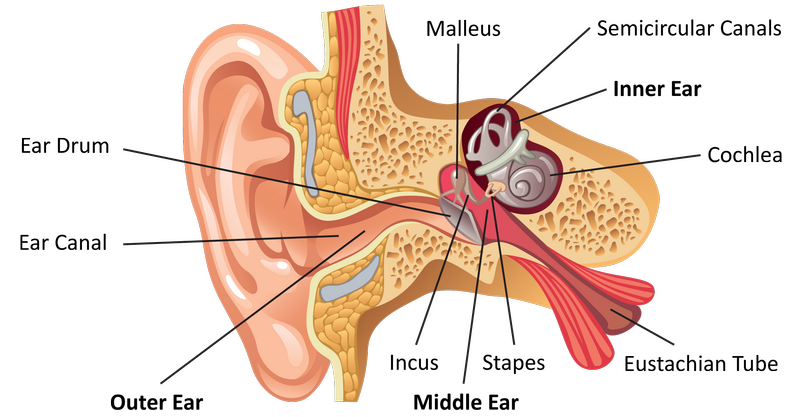MEE in Children

What is Middle Ear Effusion (‘Glue Ear’) in Children?
In a normally functioning ear, the middle part of the ear is an air filled cavity (about the size of an m&m) which is regulated by the Eustachian Tube (a tube that connects the middle part of the ear with the back of the nose/throat). Small amounts of fluid can build up in the middle ear, however this drains through the Eustachian Tube. Middle ear effusion (fluid build-up/blockage) occurs when there is an accumulation of fluid in this middle part of the ear and a blockage in the eustachian tube.

What Causes Middle Ear Effusion?
Middle Ear Effusion (MEE) can occur in conjunction with an ear infection however can also be triggered by colds, allergies, enlarged tonsils or adenoids or a family history of middle ear issues. In these cases, more fluid is produced in the ears (just like the nose when a child has a cold) and the Eustachian Tube does not functioning optimally. The fluid cannot be drained nor can the pressure inside the middle part of the ear be regulated. As a result, there is an over production of fluid. This issue is very common in children under the age of 8 years as in these younger children, their eustachian tube is under-developed and sits more horizontal than in adults. As a result, the eustachian tube doesn’t drain fluid or equalise pressure optimally and a build-up of fluid can occur in the middle ear.
What Are The Signs Your Child Could Have Middle Ear Effusion?
• Asking for the TV to be up louder
• Asking for repeats of what has been said
• Unresponsiveness or inattentive
• Delayed or unclear speech.
• Academic concerns in the classroom
• Ongoing ear infections
Diagnosis:
An appointment with your audiologist will help determine if your child is suffering from MEE. In your appointment the audiologist will:
• Examine your child’s ears
• Complete a test to determine the middle ear pressure and whether fluid is present behind the ear drums (known as tympanometry).
• Complete a hearing test.
Prognosis and Treatment:
Episodes of middle ear effusion usually get better on its own (especially during the warmer Summer months). In the event the middle ear effusion has not been present for a long time and a not associated with significant hearing loss, speech delay or linked to damage of other ear structures, observation can be useful. However the fluid can sometimes remain present for a number of months. If this is the case, medical treatment is recommended especially if associated with hearing loss, behavioural issues, delayed speech or ongoing ear infections. Medical treatment may involve surgical intervention by an Ear Nose and Throat (ENT) specialist. A ventilation tube (‘grommet’) can be inserted into the ear drum to help to ventilate and drain the fluid from the middle part of the ear. This is a simple (usually day) procedure and only takes 20-30 mins. Grommets can help to improve hearing, behaviour, language and speech and decrease the frequency of ear infections.
If you are concerned for your child’s hearing, it is important to book an appointment with an audiologist for a hearing assessment. Contact us on 9839 3350 (for Boronia and Doreen) or 9800 5697 (for Wantirna).
